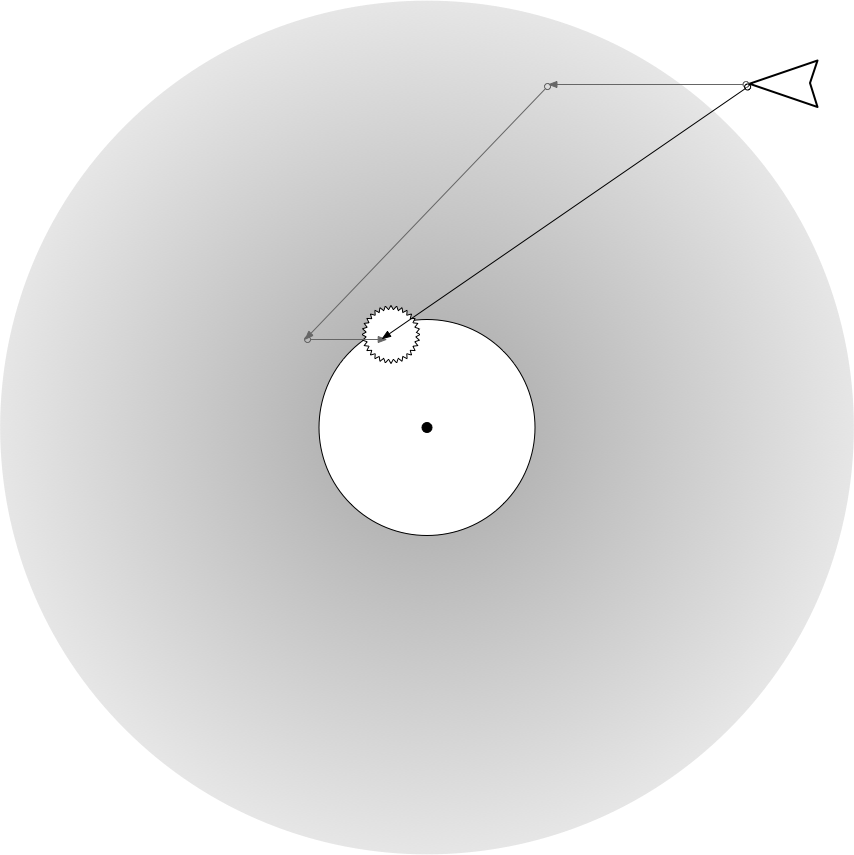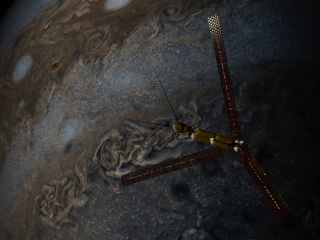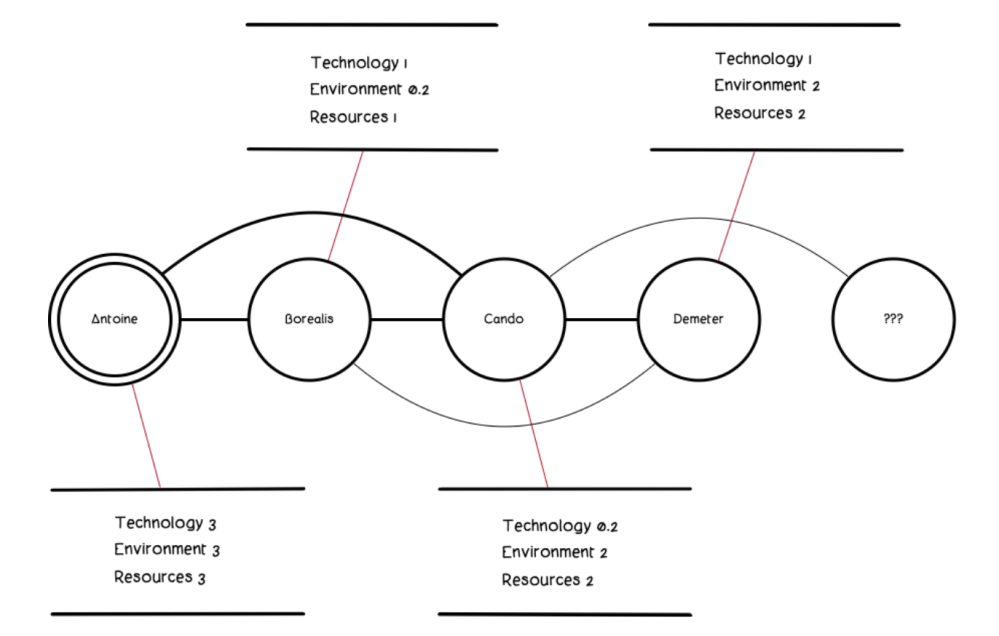 I remember my wife bought me a copy of Space Usagi in the distant past and I was very excited — after all, I love science fiction and I love Usagi Yojimbo! And I read it and I was bitterly disappointed.
I remember my wife bought me a copy of Space Usagi in the distant past and I was very excited — after all, I love science fiction and I love Usagi Yojimbo! And I read it and I was bitterly disappointed.
You see, what they did was just paint the science fiction on. They had ray guns and fought aliens on alien planets, but the tropes were largely the same as the non-sf version and the imagery was the same but with space-bits glued on. Japanese fortresses hovered in space. Space armour looks remarkably like samurai armour. They have laser katanas.
This felt like, well I want to say “betrayal” but that’s pretty harsh, but I did feel betrayed. We have a masterful storyteller and artist and it feels like they just didn’t put the work in to really adopt an alternate genre. They just painted the old one a new colour. There is no attention to how technology changes things. There’s no effort to understand the differences between Edo era Japan and some distant future. And so the stories are completely transplantable: there is nothing new or exciting here other than amusing new space art.
This lack of intentionality happened a lot in early popularized science fiction as well — surely we all recall mentions of technologies like “space pills” and “space wrenches”. This just lacks effort and it’s kind of insulting.
So anyway, what I never ever want is for my science fiction gaming to be that. When I choose science fiction for play I am not choosing it because I want space ships and lasers. I am choosing it because I want to explore a world impacted by the fact of space ships and lasers. It’s not enough to say you can easily change your physical body, growing a penis or a vagina at will. You have to address how this makes the place different from where we are now. And, at least as importantly, how it’s the same. Or at least how it’s relatable, how it’s an extension of where we are now. An important question I want to ask is “how did we get from here to there?”. And what were the costs?
This is why the cluster generation system of Diaspora (and the upcoming Diaspora Anabasis) is what it is: we create random solar systems with various technologies, resources, and environments and we ask at least these questions of you: what does this society look like given its attributes? How did it come to this? How does this affect its relationship with its neighbours?
My thinking was that if you start with making sense of these things — and likely making sense of apparent impossibilities like very low technology and very low environments — then your stories would necessarily start in a place that is not just a paint job over a place you know already. It might wind up caricatured that way (we all get a little lazy) but it doesn’t start that way and you are not invited to imagine it this way. You have all the cues you need to wonder about how technology affects a world (and not our world) and how it creates power imbalances and how those gradients affect every other system.
And I think this is the heart of the paint job problem: when the setting begins as something totally familiar but with lasers, there is nothing to grab on to and wonder about. If you’re even slightly lazy then you are stuck at the bottom of a false minimum, a place that’s easy to get to but not nearly the best you can do.
 And since — oh! shiny! — we’re on to false minima…. A false minimum is a low spot on a curve that is not the lowest spot but is surrounded by increasing values, so if you are using a simplistic algorithm to try and find the minimum point on the graph, you can get stuck there. Sometimes they are stable (there is no easy way out) and sometimes they are unstable (a minimal effort would need to be put in to find a lower minimum. So you have points that are “metastable” (in thermodynamics, anyway) which are false minima — you need a lot of energy applied in a direction you don’t want in order to get free. You have points that are unstable (curvature around them slopes flat or down) and require only a small amount of energy to go one way or another. And you have stable points where there is no lower to go no matter how much energy you spend.
And since — oh! shiny! — we’re on to false minima…. A false minimum is a low spot on a curve that is not the lowest spot but is surrounded by increasing values, so if you are using a simplistic algorithm to try and find the minimum point on the graph, you can get stuck there. Sometimes they are stable (there is no easy way out) and sometimes they are unstable (a minimal effort would need to be put in to find a lower minimum. So you have points that are “metastable” (in thermodynamics, anyway) which are false minima — you need a lot of energy applied in a direction you don’t want in order to get free. You have points that are unstable (curvature around them slopes flat or down) and require only a small amount of energy to go one way or another. And you have stable points where there is no lower to go no matter how much energy you spend.
We think of low as bad but low here is good.
The reason this gave me an oh shiny moment is because it might be the case that our universe is in a metastable vacuum state — that is, the vacuum of space might be at a very low energy state but not at the lowest possible energy state. We call this a false vacuum because the real one is at the lowest energy state. If this is the case, that we are in a metastable universe, then it is possible for changes in local energy to push us out of that trough to plummet down to a lower energy state — possibly a stable one but also possibly just another false minimum. If this happens then we get “bubble nucleation” and the laws of physics may change (a little or a lot) in a bubble that expands from that point at the speed of light. And at the speed of light means there’s nothing you can do about it — you will literally only know about it when it happens to you.
The effects of a shift from a low vacuum energy to an even lower vacuum energy are speculated to vary between unnoticeable (which may have happened before) to survivable (which also may have happened before) to catastrophic. A bubble nucleation could end not only life, but the very form matter takes.
Now that’s exciting!





 So if you orient your sail at 45° to the sun, the photons will bounce off as shown in the dotted line. In doing so, thanks to Newton, you will get a vector full of momentum following the solid line. You are now accelerating and your orbit will elongate as desired! To slow down, just flip around 180° and bounce the light the other way. With these two moves and some minor adjustments you can fly anywhere there are enough photons from the sun. Practically that’s probably out to Jupiter or so.
So if you orient your sail at 45° to the sun, the photons will bounce off as shown in the dotted line. In doing so, thanks to Newton, you will get a vector full of momentum following the solid line. You are now accelerating and your orbit will elongate as desired! To slow down, just flip around 180° and bounce the light the other way. With these two moves and some minor adjustments you can fly anywhere there are enough photons from the sun. Practically that’s probably out to Jupiter or so.
















 That up there is two reasons of course: we don’t like being told to play our pretend personalities differently, and feeling real bad feelings can really feel bad.
That up there is two reasons of course: we don’t like being told to play our pretend personalities differently, and feeling real bad feelings can really feel bad.



 It did get me thinking about a single abstract map for combat, though: surely if it was possible to generalize social combat to use a single map, then maybe you could do the same for combat! This is of course the same trap as thinking you can use a hit points combat system and relabel everything to make a decent social combat system. But I still think it might work, especially for mass combat which seems to demand more abstraction.
It did get me thinking about a single abstract map for combat, though: surely if it was possible to generalize social combat to use a single map, then maybe you could do the same for combat! This is of course the same trap as thinking you can use a hit points combat system and relabel everything to make a decent social combat system. But I still think it might work, especially for mass combat which seems to demand more abstraction.